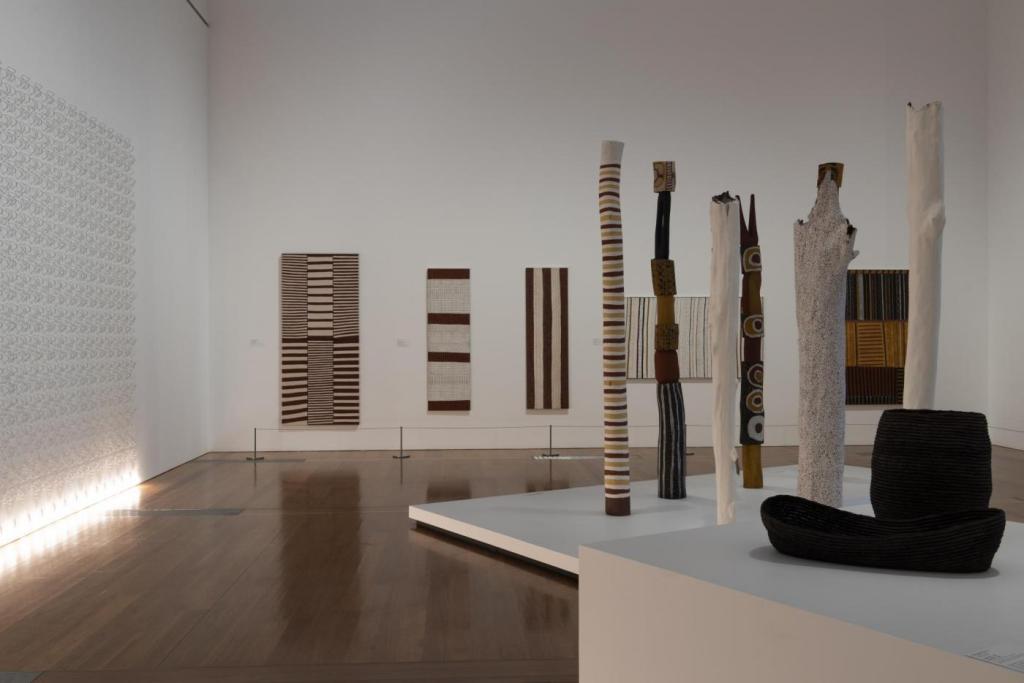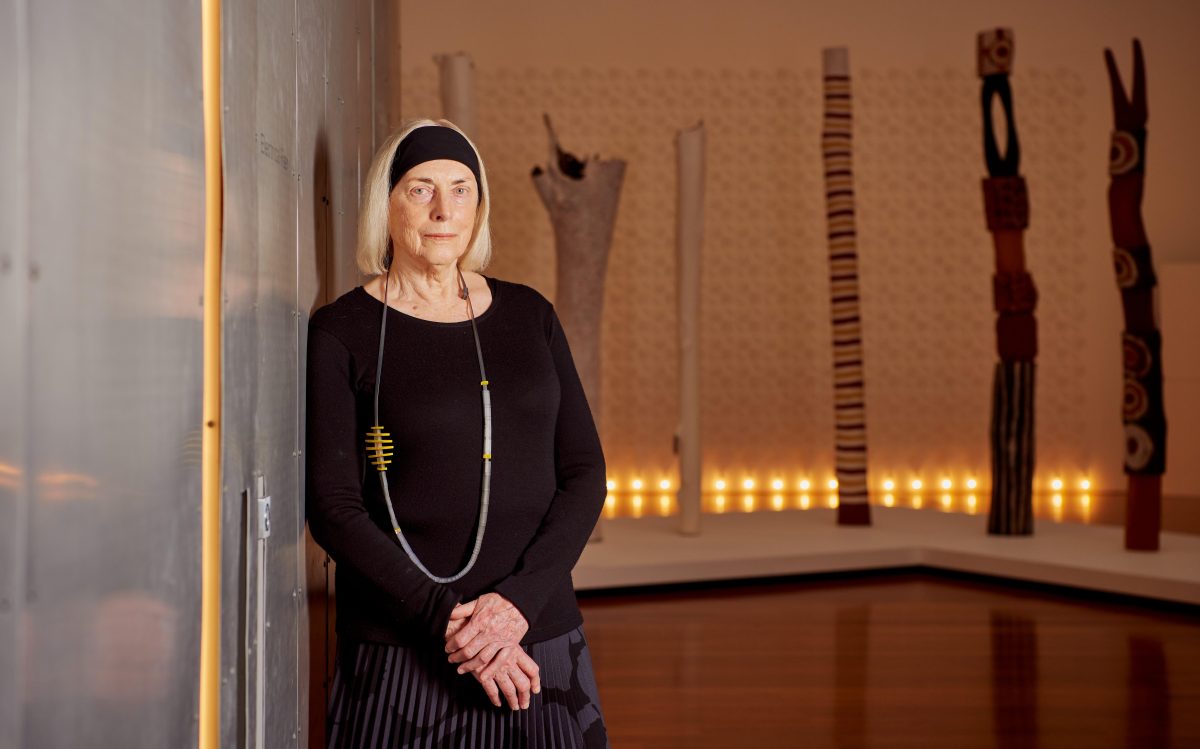Currently on view at Brisbane’s Gallery of Modern art is a two-chapter exhibition, Transitions, which brings together eight decades of Aboriginal bark painting alongside works by celebrated contemporary First Nations artists.
The first chapter, Transitions: Historic and Contemporary Barks from the Collection 1948 – 2021 is organised by region. It starts off with a deep dive into the Kimberley in Western Australia and then ‘follows Country all the way around’, explained Diane Moon, Curator, Indigenous Fibre at QAGOMA (Queensland Art Gallery and Gallery of Modern Art).
Moon continued: ‘On the other side in Transitions Now, it’s more about aesthetics. For instance, [works by] Michael Riley, Jonathan Jones, local artist Elisa Carmichael, and 2022 Telstra [National Aboriginal and Torres Strait Islander Art] Awards winner Margaret Rarru [Garrawurra].’
Moon said that the exhibition has seen a great coming together of artists from different geographical regions, something that can be also traced throughout her life and four-decade career.
‘I lived in Arnhem Land for 12 years and frequently had visits from Tracey Moffat, Fiona Foley, Lin Onus and people like that who would come and stay. You’d meet them, you’d travel and you’d take artists to Melbourne or Sydney and so on, which saw this crossover of artists. I think the exhibition just reflects that.’
At the heart of the exhibition is the desire to ‘represent Aboriginal art and show the histories from the 40s till now,’ said Moon.
‘Very early works are combined with artists from the same families, sometimes spanning two or three generations.’

The exhibition presents an eye-opening variety of practices, not only in terms of the stories being told but the mediums and techniques being used.
From traditional bark paintings to works etched into metal and black rubber, visitors can get a sense of the scope and diversity of First Nations art.
‘There’s one artist in particular, Gunybi Ganambarr, who was perhaps the first to use found materials in Yirrkala and given permission by the Elders to do so,’ said Moon.
‘[The Elders] realised he was still using materials from his land, such as those leftover from buildings, schools or using black rubber, which was taken from conveyor belts used by the mining companies. In one of his works, it’s on a very old section of a water tank that was out in the bush community, which he took apart and then etched a traditional story into it. That’s the sort of continuity that you can find in the exhibition.’
Moon said that there is also always a political element tied to these works, especially those in Transitions Now.
In a way, all Aboriginal art is political because it says “we are here and we have survived.”
Diane Moon
‘Women bark painters have really come to the fore in recent years. One of them is Dhuwarrwarr Marika, represented by her bark paintings in Transitions, but also her contemporary work, which is enamel painted onto building material, and there is an incredibly history.’
Transitions also marks the closing exhibition of Moon’s four-decade career and the 20-year curatorial role that she has held at QAGOMA since 2003.
‘I’m leaving QAGOMA, but we’ve got three incredible First Nations curators here now – Katina Davidson, Adam Ford and Sophia Sambono … I didn’t think about Transitions that way at first but, in retrospect, I guess it is like a legacy,’ said Moon.
‘In fact a work in the Transitions exhibition that came to us through a donor was in the very first show that I curated in 1983. Years later when the work came to QAGOMA, the donor remembered me for selling it to him. So then as the exhibition evolved, it turned out to be sort of my history as well.
‘It’s been a huge reminder for me of many people, artists and places. That’s history – nothing’s changed but everything’s changed,’ concluded Moon.
Transitions Now: Contemporary Aboriginal Forms and Images from the Collection is on view until 25 June 2023; Transitions: Historic and Contemporary Barks from the Collection 1948-2021 is on view until 10 April 2023. Find out more at QAGOMA.





